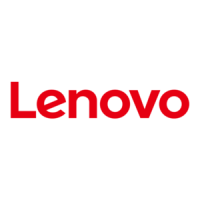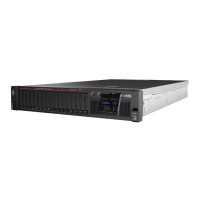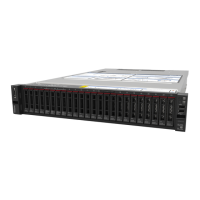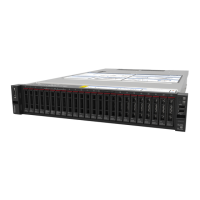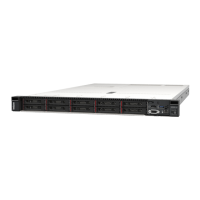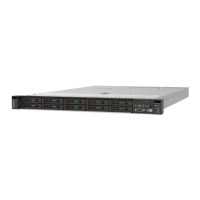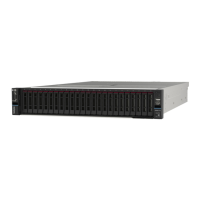Figure 89. Hard disk drive backplane (lower) installation
Align the backplane with its location in the server; then, insert the backplane and push it down until
it is fully seated.
Step 3. Repeat Step 1 on page 150 and Step 2 on page 150 for each hard disk drive backplane being
installed in the lower compute tray.
Step 4. Route and connect the data cables. See “Cable routing for drives” on page 29.
• Route each SAS data cable to its connector on the RAID adapter; then, connect the SAS cable.
• Route each NVME data cable to its connector on the compute system board; then, connect the
NVME cable.
Step 5. Make sure that all power cables are connected to the storage interposer.
Step 6. Route any cables that were moved to access the backplanes and connectors.
After you install a hard disk drive backplane:
1. Install the storage interposer and connect all cables. See “Install a storage interposer (lower tray)” on
page 185.
2. Make sure that all of the cables are correctly routed after they have been connected.
3. Install the fan cage. See “Install a fan cage (lower tray)” on page 137.
4. Install the lower compute tray. See “Install the compute tray (fully removed)” on page 125.
5. Install any hard disk drives that you removed from the lower compute tray. Each drive should be
installed in its original location. See “Install a hard disk drive” on page 141.
6. Install the front cover. See “Install the front cover” on page 139.
I/O tray replacement
The I/O tray is accessed from the rear of the server. The I/O tray is the server component that stores server
identity information. This information must be transferred to the new I/O tray during maintenance
replacement.
Appendix B. Component reference 151
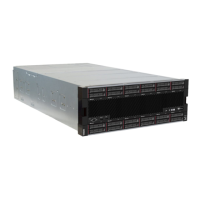
